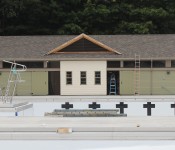Town Meeting Members:
In my eight years as Town Moderator I can recall few if any issues that have so aroused the passions of Town Meeting Members as the subject of [today’s] Special Town Meeting. I have taken advice from many people and spent many hours seeking to plan the meeting in order to focus the discussion in the fairest and most civil way possible.
Given the emotions surrounding this issue, I am concerned that the debate could easily deteriorate into accusations and personal attacks. While I will not allow that, I am making a special plea to each of you to keep your remarks positive and constructive. There are opposing opinions, of course, which is the point of a healthy debate, but one can make a strong argument for one’s position while still being respectful of another person and point of view. How we conduct ourselves tomorrow night will be important in allowing us to work together on this and the many important issues facing the town.
I urge your cooperation. Thank you.
Mike Widmer
Moderator





